If it is possible to have a favorite aircraft, mine would be the Tupolev Tu-95.
The story of the Tu-95 goes back to 1944. During the Great Patriotic War, the Soviets watched with both awe and horror as the Boeing B-29 Superfortress devastated Japan. It was decided that the Air Force needed an aircraft of similar heft and range, lest the Soviets be held hostage by an American bomber gap. At the time, other than the Petlyakov Pe-8, the Soviets had limited bombing capability outside the tactical arena. Sure, they had Li-2s and obtained the occasional B-24 or B-17, but in terms of presenting a threat, there was nothing of the sort.
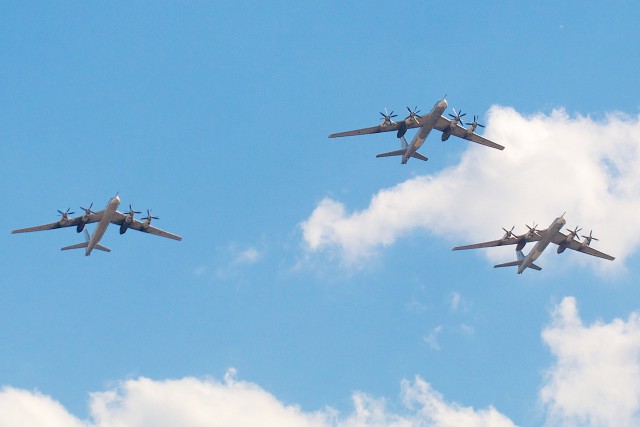
Three TU-95s fly over Russia in 2012 – Photo: Andrey Belenko | FlickrCC
The Air Force went forth and tasked Andrei Tupolev and Vladimir Myasishchev to design their own heavy bombers. Little was written of Myasishchev’s “objects 202 and 302”, other than that they were similar to B-29s in many ways. Tupolev parried with something commonly referred to as “object 64.” Imagine a fatter B-29 with a twin-tail and 23mm cannon in place of 50 caliber machine guns. Was it a copy of the B-29 – absolutely not. It’s just what engineering doctrine of the time would have you do. “Object 64” would have had a range of about 2,500 miles and a payload of about 10,000 pounds.
The designs of both Myasishchev and Tupolev progressed nicely. However, due to the exigencies of the war, sourcing the materials needed to produce any of the three designs was proving difficult. Stalin saw this. Stalin, after all, saw pretty much everything.
Now, when this decision was made is a bit of a historical question- however, it was decided that the B-29 was already the ideal strategic bomber. So, why not directly copy it?! Luckily, that same year (1944) some U.S. Army Air Corps B-29s had made emergency landings in the Soviet Far East. Due to neutrality in the Pacific Theater, the Russians impounded these aircraft. Copying them could never have been easier.
Although the Tu-4 was a 1:1 copy of the Boeing B-29, the Soviet design improvements began to diverge from the original manufacturer’s intent. While Boeing would eventually go with the B-50, Tupolev would go with a two-pronged approach. One would be to create a non-Tu-4 based aircraft that would have superior capabilities, and the other would be Tu-4 variant of some design. Both would have an ideal range of 12,400 miles.
The non-Tu-4 designs got pretty outrageous. For example, there was a six-turboprop powered, 190,00lb leviathan called the Tu-200. It was the Soviet’s idea of a B-36 – which curiously managed to show up in Western aviation journals. It went exactly nowhere.
The Tu-4 derivatives led to something. The original idea was to use the Tu-4 fuselage, but mate it with a new (low-drag) wing with an area of at least 2,153 square feet. It would also feature heavier engines. The first aircraft to see the light of day from these studies was the Tu-80. The Tu-80 had some bright points: it carried 15% more fuel than a Tu-4, was ruggedized for Soviet conditions, had lower drag, and also was capable of carrying a larger payload.
Unfortunately, it was not good enough to justify being put into serial production. Next up was the Tu-85. The most notable thing about the Tu-85, compared to its two predecessors, was that the cockpit was completely different. It also featured the latest twenty-four cylinder engines from Dobrynin. Lacking the forward-basing capacity the America had, the Tu-85 had a limited range of 7,468 miles with a payload of 11,000lbs. Two Tu-85s were built, with the first flight occurring on June 28, 1951. The aircraft was so promising that prior to flight test, serial production was approved on the twenty-third of March.
By the time flight testing had concluded in November, the serial production order had already been revoked. While the B-29 had been designed to have a speed and altitude advantage over the daylight fighters of the second World War, it proved to be easy prey for People’s Korean Air Force and People’s Liberation Army Air Force Mig-15s flying over Korea. Logic stood that if the B-29 was so easily put in harm’s way, a Tu-4 or its derivatives would be in for an equally-hard time when confronted by F-86s or other American fighter/interceptors of the era. I must say that as early as 1948, there was talk of putting turbines on the Tu-85. This would increase the range to a maximum of 10,681 miles at a speed of 497 mph. Figures that impressed no one.
All was not lost. In 1950, Vladimir Myasishchev approached Soviet Air Force command with a bomber that was powered by four Mikulin engines, carried 10,000lbs of payload, and flew at a speed of 590 mph for a range of about 8,100 miles. This project became known as the M-4. The M-4 was given nearly unlimited resources in hopes that it would accelerate its development.
How wrong they were – but this not an article about the woeful, but awesome-looking, Myasishchev jet-bombers. I shall sum this up quickly. Pure jet technology let them down, and the aircraft never met their range specifications. Myasishchev fell into ignominy until the mid-1970s (when Tupolev would steal their project anyway).
Meanwhile, as early as 1948, Tupolev began design studies. Not Andrei himself, but his minion N.S. Kondorsky. They had taken data from a TsAGI report, based on captured German research, about how one would design an aircraft that weighed between 160,000 and 320,000lbs. It was, generally, determined that such an aircraft should have a 25º to 35º sweep. Some of the designs that came from this study had eight engines.
Eventually, this work led to the ubiquitous medium bomber – the Tu-16. But wait, you say – how does this have anything to do with the Tu-95?
Well, TsAGI became intimately familiar with large wings of 35º sweep. So much so that if the wing was extended and attached to the fuselage of a Tu-85, there might be an opportunity for a new strategic bomber. Now, for those of you with vivid imaginations, it might seem to you that a swept-wing Tu-85 is starting to look a little familiar. You are not wrong.
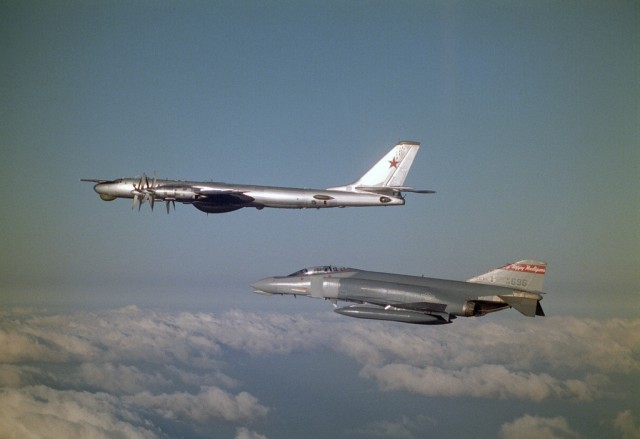
A U.S. Air Force F-4D Phantom follows a Soviet TU-95 over Iceland in 1983 – Photo: North Dakota National Guard | FlickrCC
To go further with this project, an engine decision would have to be made. The choice came down to either four turbojets or four turboprops. Kondorsky and his team, correctly, observed the state of Russian jet engines at the time – and discovered that the Kuznetsov design bureau was working on a turboprop engine at the time known as the TV-2. This engine was actually based on captured Jumo 022 engines and their detained designers.
The Tv-2 was an up-and-coming engine design, but lacked the necessary power to thrust a strategic bomber with a full payload. Kuznetsov came up with two test article engines that might be able to do the job – the TV-10 and the TV-12. The TV-12 turned out to be the best idea, as it was not simply two turboprops joined by a single gear box. Instead, it was a massive beast of an engine, with a fourteen-stage axial-flow compressor. This engine would drive contra-rotating propellors (designed by Zhdanov) with an original diameter of a little more than 18 feet. This engine would become the legendary Kuznetsov NK-12, the most powerful turboprop engine ever produced to this day. It must also be noted that the tips of the props would be pushed past supersonic speeds. This would make the engine and its propeller one of the loudest ever produced.
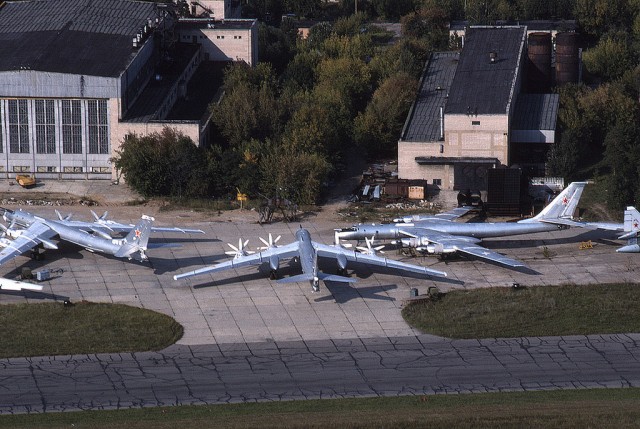
Multiple TU-95s on the ground during the MAKS air show in 1995 – Photo: Eric Bannwarth | FlickrCC
Stalin caught wind of this and, in a rage, summoned Andrei (whom he had already confined to the gulags once) to explain himself and this “bomber 95”. He was curious as to why the Tupolev OKB would be wasting resources on a competing project to the savior of the M-3. The conversation must have gone very well, as production was allowed to continue.
As development continued of both the airframe and the power plant, the airframe began to outpace Kuznetsov’s efforts. In order to meet the schedule, it was decided that a backup engine may be necessary. This was dubbed the 2TV-2F. In essence, it was two TV-2s strapped together (exactly what they had wanted to avoid). It gets worse; no gearbox existed in the aviation world that was sufficient to meet this task. A new gearbox had to be developed to cope with the 2TV-2F. Regardless, on July 11, 1951, a decree from the Ministry of Aviation Industry came out stating that Tupolev had to construct two test articles. One would be powered by four 2TV-2F engines and had to be ready by September of 1952; the other would be equipped with four TV-12s and had to be ready exactly one year after the first.
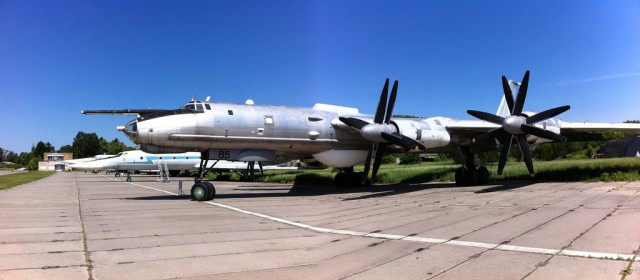
A Tupolev TU-95 Bear at Ukraine State Aviation Museum – Photo: Wayan Vota | FlickrCC
By late summer 1952, the 2TV-2F powered article was ready. Well, in the sense that it had been moved, piece by piece, by road to Zhukovsky. Right on schedule (20, September 1952) the aircraft was ready for flight testing. The KGB decided to freak out. Residents and farmers along the eastern bank of the Moscow River were placed under strict controls, as they may have had the ability to see parts of the Zhukovsky ramp. The aircraft was only allowed to be worked on when there were no trains passing by on nearby tracks. Then again, this was in an era before spy satellites. This kind of information control actually worked!
The Tu-95 first took to the air on November 20, 1952. The flight lasted fifty minutes and never exceeded 3,700 feet. It was largely uneventful. April 17, 1953 would change that. The test article suffered a catastrophic gearbox failure. The aircraft managed to limp back to Zhukovsky, but some Tupolev engineers were becoming suspicious on the efficacy of the 2TV-2F. They were, unfortunately, right. On the eleventh of May of that year, the aircraft would take off for its final time. The radio operator reported hearing a loud pop while they were testing the engines at maximum thrust at an altitude of 24,000 feet. The aircraft would then be consumed by flames. While Commander Perelyot steered the aircraft away from populated areas and attempted to perform an emergency landing, only the aforementioned radio operator would survive.
An investigation would soon discover that the gearbox failures were, in part, caused by manufacturing defect. More alarming, however, was that Kuznetsov had discovered gearbox failures around the forty-to-fifty-hours mark while testing the 2TV-2F on the stand. Nikolai Kuznetsov had no idea of this, or if he did, was a very good actor – as when he found out, he became pallid and fainted. I would have too; after all Stalin’s KGB chief had taken a personal interest in the aircraft. Failure was not an option. As a monument to their failings, the damaged reduction gear from the stricken Tu-95 was put on display in the Kuznetsov factory.
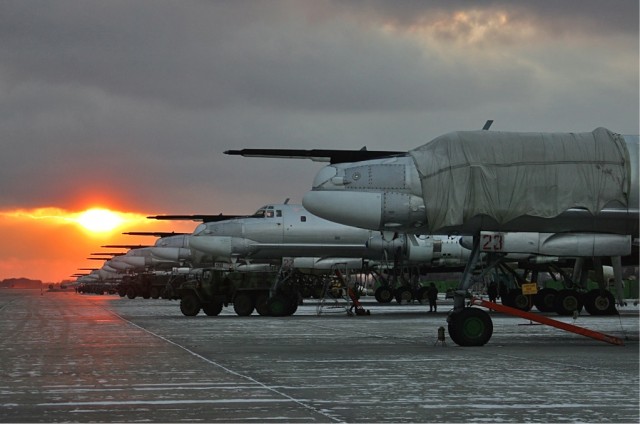
A lineup at sunset of Tu-95MS at Engels Air Force Base in December 2005 – Photo: Dmitriy Pichugin | WikiCC
After the big OKBs were ordered to have a “crash free” test program in mid 1953, Kuznetsov engaged in an unseen-by-Soviet-levels testing regimine of the new TV-12 engine. The TV-12 was also mounted to a Tu-4LL. They collected hundreds of hours of in-flight data. The Aviation Ministry and the KGB demanded it.
The second Tu-95 was also put through a new battery of static and vibration testing. This Tu-95 would be informally called “the understudy.” The understudy was probably a better aircraft. While the prototype Tu-95 was 15% over its target weight, the understudy was only 3%. The tail had been improved, and there were also minor tweaks to other parts of the construction. Due to extensive delays with the engine certification, an additional 15 Tu-95s were produced from 1954 to 1955. It was not until February 16, 1955 that the understudy would finally take to the air.
Things worked out nearly perfectly. The aircraft did everything it was supposed to and was, surprisingly, reliable. It was clear this aircraft, unlike its competitor, was going somewhere.
Now, I would be remiss in ignoring the fact that the first production batch – the Tu-95M – did not quite meet specifications. It was pretty close, so serial production was approved – as quickly as possible.
I could bore you with a lot of different variants of the strategic bomber “Bear” (its NATO callsign). The production Tu-95s were all assembled by Aviakor in Samara. Most of the variants had to do with avionics changes, improved aerodynamics, or the ability to carry new stand-off munitions.
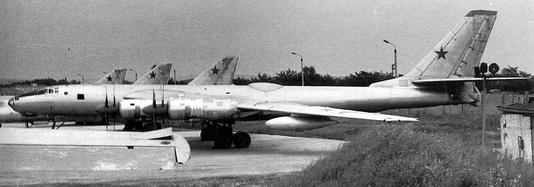
The Tu-95LAL – the bulge behind the wing is where the nuclear reactor sat – Photo: Russian Air Force
The one standout variant was the Tu-95LAL. LAL, you see, is a Russian abbreviation for “Flying Nuclear Laboratory”. This aircraft made forty flights with a full nuclear reactor on board. While most of the flights were made with the reactor nowhere close to operational to test the shielding, some were flown “hot”. The end goal was to create an aircraft called the Tu-119, which would be powered by two Kuznetsov NK-14 engines. The NK-14 would be capable of being driven by both kerosene and superheated steam.
The outboard engines would be regular NK-12s. The goal, like with the American Convair NB-36, was to create a strategic bomber where the only limit to its endurance was the crew. Neither the Soviet nor American projects went beyond single test articles. The Sovie’s cited cost as the reason for cancellation. I suspect there was more than that.
But Bernie, what about the Tu-116? That’s another story for another day. Sit tight. I’ll get there!
The VVS Long Range Aviation Tu-95 would culminate with the Tu-95MS. This version operates to this day.
It’s one thing if you need to lob cruise missiles or other stand-off munitions at a target on land. Generally, targets worthy of nuclear obliteration (or at least an air-launched cruise missile of the conventional variety) tend not to be mobile. Unfortunately, 70% of the world is water. Unfortunate for the Soviets as well, U.S. Navy carrier battle groups liked to remain in constant motion to preserve their role as part of America’s secondary nuclear strike capability.
The early ship-launched anti-ship missiles of the Soviet Navy were a victim in two major technological lags. Soviet surface-based radar technology and control systems were in their infancy. There was no way to guide an anti-ship missile over the horizon from a Soviet surface vessel. There were also issues in locating carrier battle groups. Soviet naval aviation was aware that the Tu-95 had both great range and great endurance. It was realized that if the bomb bays were fared over and replaced with a large, over-the-horizon search radar, and a large array of antennae, the Tu-95 could become not only a battle group tracking instrument, but also lead the missiles to their target.
The Tu-95RTs would travel the world. They would go as far as Cuba and Angola to constantly shadow American naval assets.
The Tu-95RTs’ success lead to the ultimate Tu-95 variant, the Tu-142. Stretched to both allow for more fuel and, more specific, anti-submarine equipment. While it would also carry a series of more advanced ocean search radars, it would feature two bomb bays for dropping anti-submarine munitions. The undercarriage was also reenforced to accommodate the even-rougher VMF aviation bases. The mission was also expanded to conduct signals and electronic intelligence collection, as well as electronic warfare. While many of the original Tu-142s were built by Aviakor, later Tu-142s were built under the auspice of Beriev in Taganrog.
They were responsible for the last variant of the Tu-95 to ever see production – the Tu-142M-Z. The last of 100 Tu-142s ever produced was an M-Z. It rolled off the line in 1994.
Unlike the Tu-95, the Tu-142 was actually exported. The Indians purchased eight examples, which are now being replaced by Boeing P-8s.
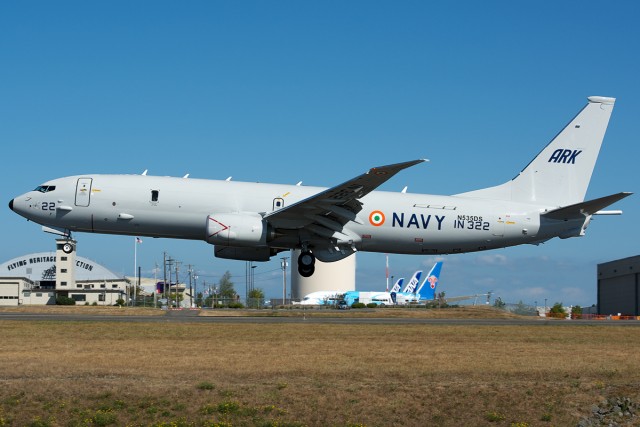
An Indian Navy P-8I Neptune landing at Paine Field – These will replace their Tu-142s – Photo: Bernie Leighton | AirlineReporter
So, in conclusion. If anyone in the VVS, VMF Aviation, or Indian Navy is reading this and can get me access to one of these gorgeous aircraft, please reach out to me. If there is one aircraft I would love to fly on, it is this one! I’ll even pay for fuel!
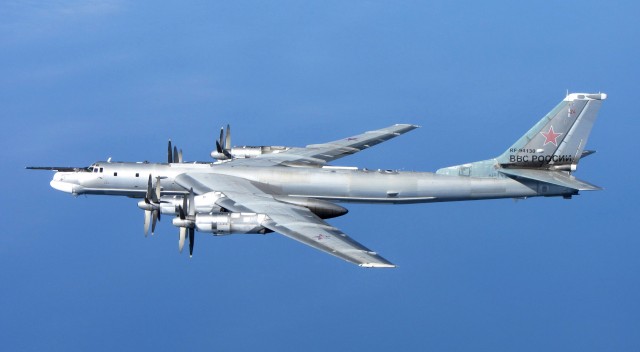
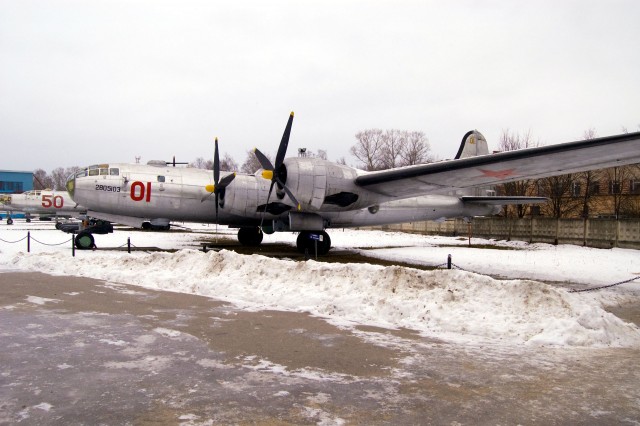
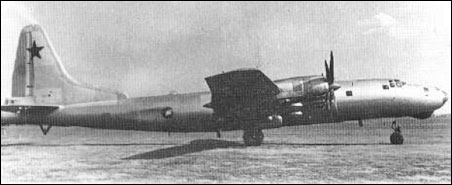
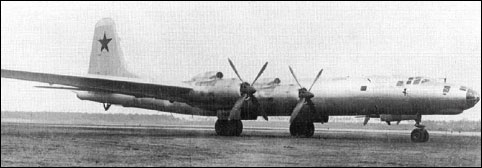
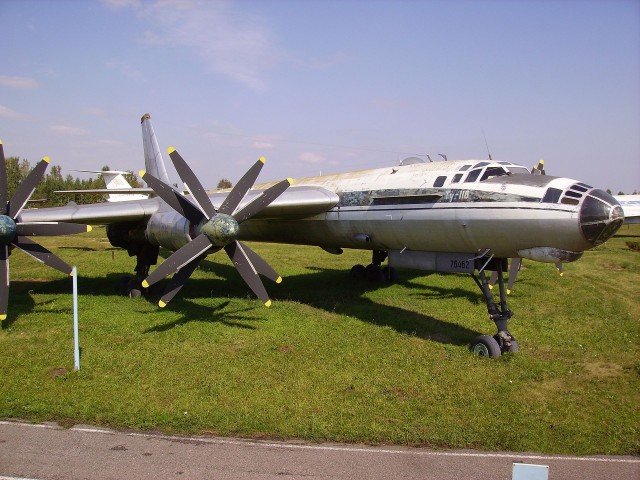
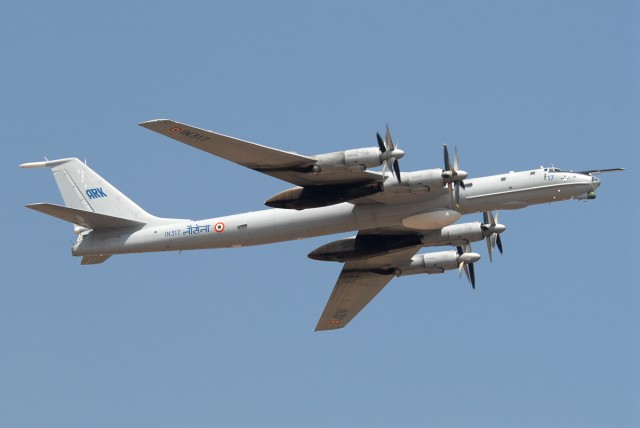
Beautiful photos! Such a sweet looking aircraft.
Bernie – as correspondent with airliner reporter, I’m curious why you didn’t mention much detail about the TU-114 airliner of which both aircraft share common airframe and power plants. First flight to USA by Soviet premiere Krushchev set aviation world on its ear with long distance non-stop flight Moscow – NYC. The TU-114 was largest and fastest civilian airliner in the world until early 60s. Very nice article and memories of this TU-95.
That’s not a story I can tell in as few a words as I could give it in an abridged Tu-95 article. I’m getting there. Don’t worry. I even included the Tu-116 photo as a teaser!
Great article. Enough information to prompt the most novice “geek” to pursue additional information.
Wow! That’s a long, impressive and (rare, here) well written article. Spot-on and with multiple details new to me. Heck yes, the Tu-95 (and 142) are likely some of the best technology that the Soviets, now Russians produced. Their Tu-95 is probably much like our old workhorse, the B-52; very few would survive a serious attack made in anger, yet both (can) carry enough destructive power to convey whatever message the political forks have in mind and if only one or two complete their mission, the message is delivered. Obviously, a very impressive airplane.
The Ruskies love to steal and copy; it must be part of their political genetic string. Taking advantage of that trait, knowingly or naught, is how we won the Cold War. when did it start? I may have been partly the B-36. Too large and cumbersome to be truly effective, I wonder if it was made as bait to get the Soviets to spend billions of rubles that they did not have to duplicate it. (How long did the B-36 remain in active, U.S. service? (Perhaps one of the shortest deployments on record, few could fly it and even fewer U.S. airfields could accommodate the thing. A terrible joke, but one that may have had another purpose.)
While the CCCP is long gone, we still play those expensive games with the Ruskies. At some point, one has to wonder why. The generals demand their toys, but toys for battles that most likely will never be fought. I still like that old bumper sticker suggesting that if the USAF needs another B-2, they should raid the funds via bake sales. We must defend ourselves, but a very few extreme weapons are enough to deter the crazy folks. It is the mid-level hardware that hurts our budget, just like it killed the CCCP. And of course, this is policy business, not budget business. I do not know the right answer – does anyone know? A great article, Bernie. You DO get it and I look forward to reading more of our articles. Thanks, -C.
Awesome article . But ,actually, contrary to popular belief , Indian Navy has no plans to replace Tu-142 with P-8I . I don’t know why does Indian media continuously says it . P-8I is replacement for IN’s other workhorse , Il-38 in long term . The current batch of P-8 will only be for expansion of Navy Air Arm and bolster its Anti Sub power . Il-38 will be deployed atleast till 2020 and Tu-142 are currently being upgraded to serve till 2031, and may serve even longer with upgrades . Tupolev is in for a long haul with Indian Navy .
As for your request , I would recommend contacting Indian Consulate or Embassy in your country.
Only they can really help you in that matter. Indian armed forces are quite shy when media is concerned 🙂
Vury interesting article, after reading it, I decided to go down to me Aircraft Hanger and get out my Original Tupolev 114 Propliner and jump in and take her for a Spin, and so we did to cruise Alt. of 15,000ft.
Clear Skies, smooth cruising altitude, all flight instruments worked, all Engines sounded and performed well, as I sat in the Cockpit flying the ol’ Russian Bird I just rolled out of the hanger.
But, something was wrong , I was Thirsty and need a Pepsi, so, I went to the refrigerator in the kitchen grabbed me a pepsi and when I came back, The FSX Flight Simulator had paused and stopped working :(,,,,,
Dang the Luck, so that ended that flight of the Tupolev 114 for the time being.
until next time 🙂 !
De’ Jetranger
Still the largest turboprop ever. Too bad y’all can’t do an article on the Aeroflot service on the Tu-114. 🙂
Knowing Bernie — it is coming — do not worry :).
David, AirlineReporter
… can I borrow his time machine, so I can fly Haneda-Moscow on the Aeroflot-JAL interchange Tu-114 service?
Hey everybody. Sorry for going off topic (great post by the way) but what do you think about chemtrails. I think it’s just nonsense but some people believe that it’s something actually dangerous. Has anyone seen these “harmful liquids” coming out of planes or anything since I’m sure you all fly much more than me. Thanks
Although I should delete this for being so far off topic, I can’t stand that people can think this is true.
http://www.nycaviation.com/2014/06/conspiracy-isnt-debunking-chemtrails/
100% they are not chemtrails. It is just nature doing its thing when man-made machines push through the air.
David, AirlineReporter
Thanks for the article. I’m now possessed of the urge to go dig out my copy of “Hunt For Red October” on Laserdisc 🙂